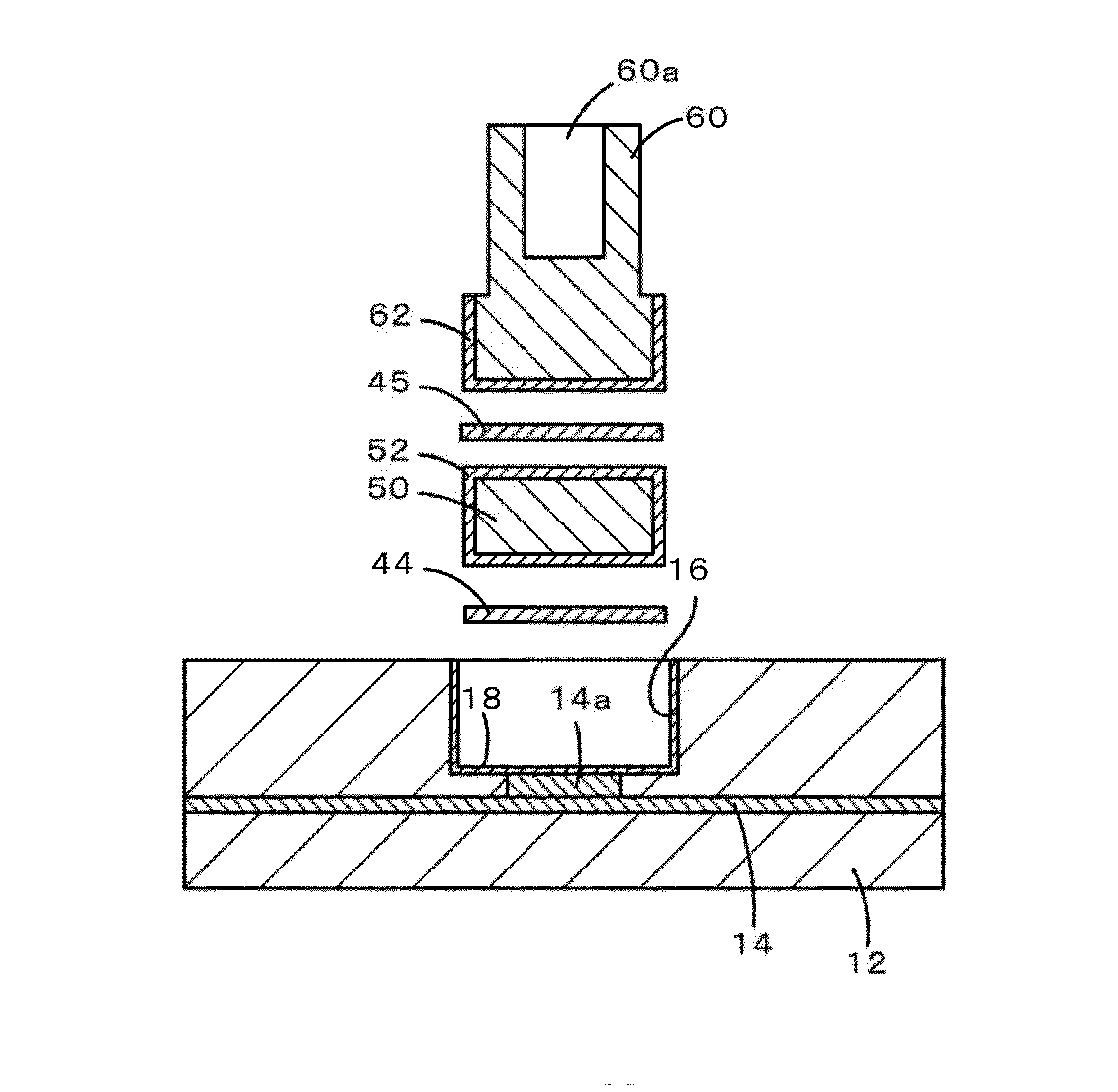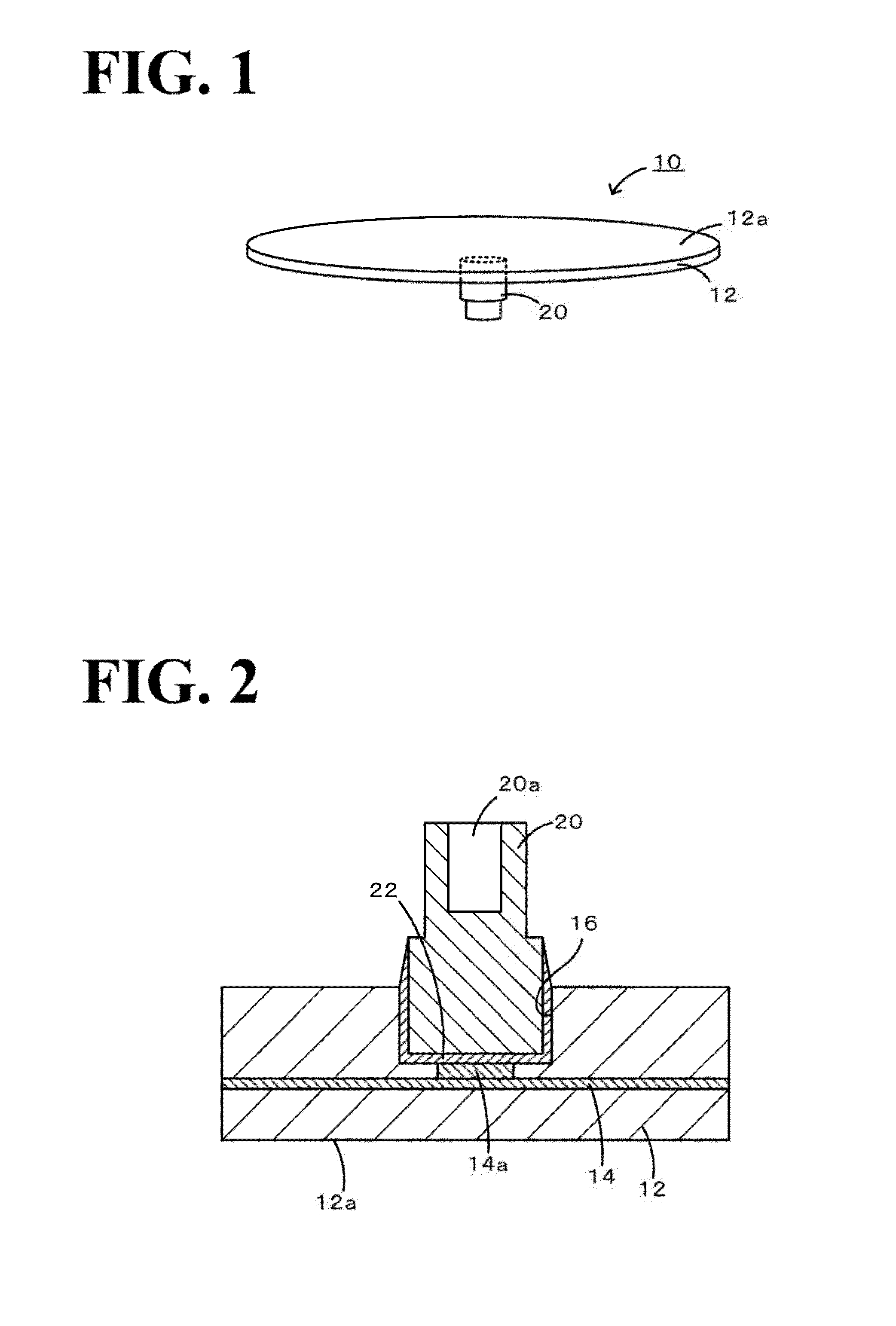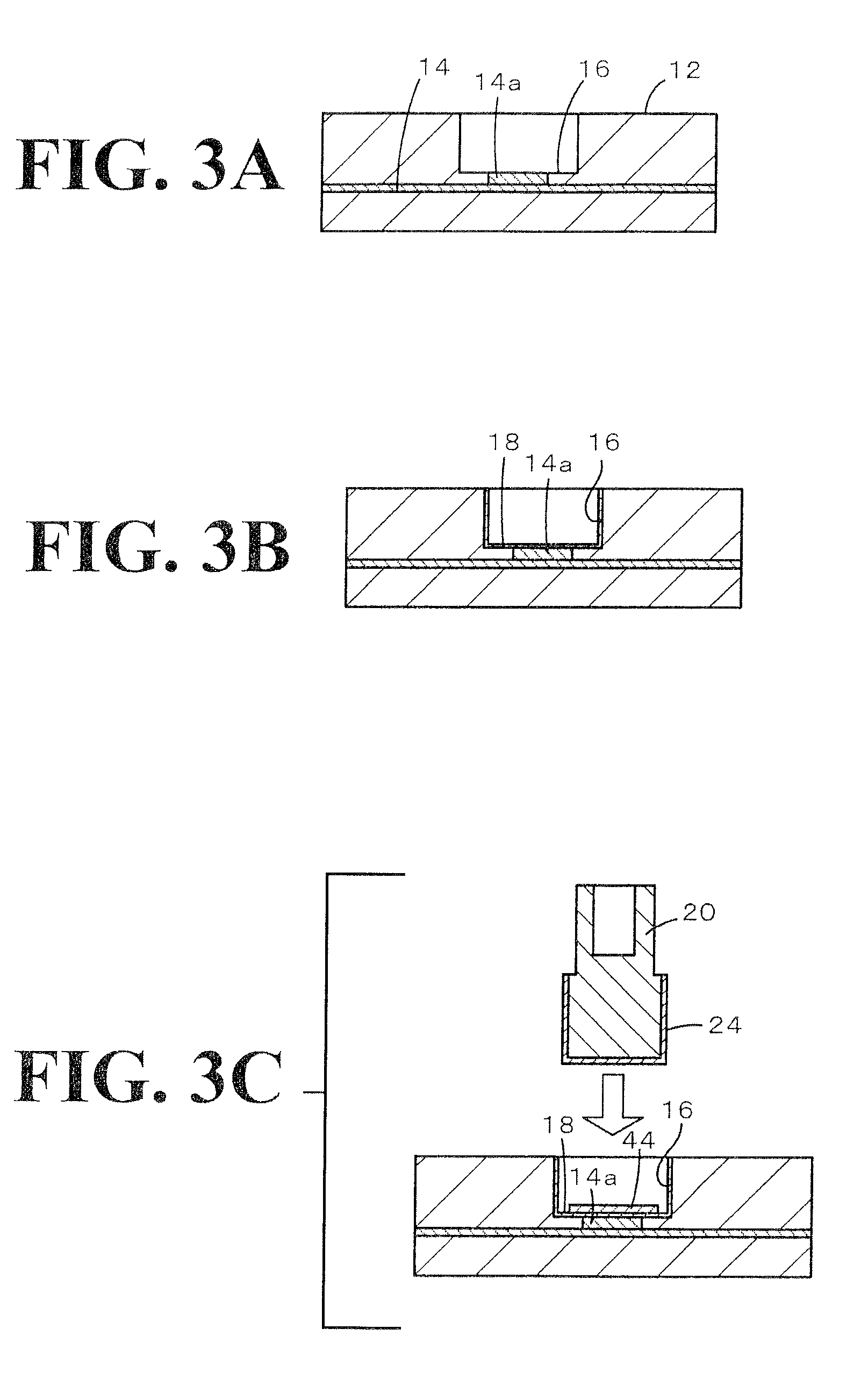Member for semiconductor manufacturing apparatus
a manufacturing apparatus and semiconductor technology, applied in the direction of electric devices, basic electric elements, electrostatic holding devices, etc., can solve the problems of high residual stress at the time of joining and insufficient joint strength
- Summary
- Abstract
- Description
- Claims
- Application Information
AI Technical Summary
Benefits of technology
Problems solved by technology
Method used
Image
Examples
examples
[1] Production of Specimen
[1-1] Production Procedure of Specimen S1
[0060]Specimen S1 simulating the joining structure shown in FIG. 2 was produced as described below. FIG. 6 is a perspective exploded view of Specimen S1. Initially, a concave portion 74 having a diameter of 6.00 mm and a depth of 0.5 mm was formed in a ceramic substrate 72 having a length of 20 mm, a width of 20 mm, and a thickness of 5 mm. Thereafter, the inside of the concave portion was subjected to a roughing treatment through sandblast, and about 3 μm of electroless Ni plating was applied. As for the material for the ceramic substrate 72, alumina (Al2O3), aluminum nitride (AlN), yttria (Y2O3), silicon carbide (SiC), and magnesia (MgO) were used. Furthermore, a power feed member 76 having a diameter of 5.95 mm and a height of 6 mm and a joining material 78 having a diameter of 5.8 mm and a foil thickness of 100 μm were prepared. Moreover, the value of the C / R ratio of a clearance C calculated by subtracting the d...
PUM
| Property | Measurement | Unit |
|---|---|---|
| temperature | aaaaa | aaaaa |
| melting point | aaaaa | aaaaa |
| temperatures | aaaaa | aaaaa |
Abstract
Description
Claims
Application Information
 Login to View More
Login to View More - R&D
- Intellectual Property
- Life Sciences
- Materials
- Tech Scout
- Unparalleled Data Quality
- Higher Quality Content
- 60% Fewer Hallucinations
Browse by: Latest US Patents, China's latest patents, Technical Efficacy Thesaurus, Application Domain, Technology Topic, Popular Technical Reports.
© 2025 PatSnap. All rights reserved.Legal|Privacy policy|Modern Slavery Act Transparency Statement|Sitemap|About US| Contact US: help@patsnap.com



